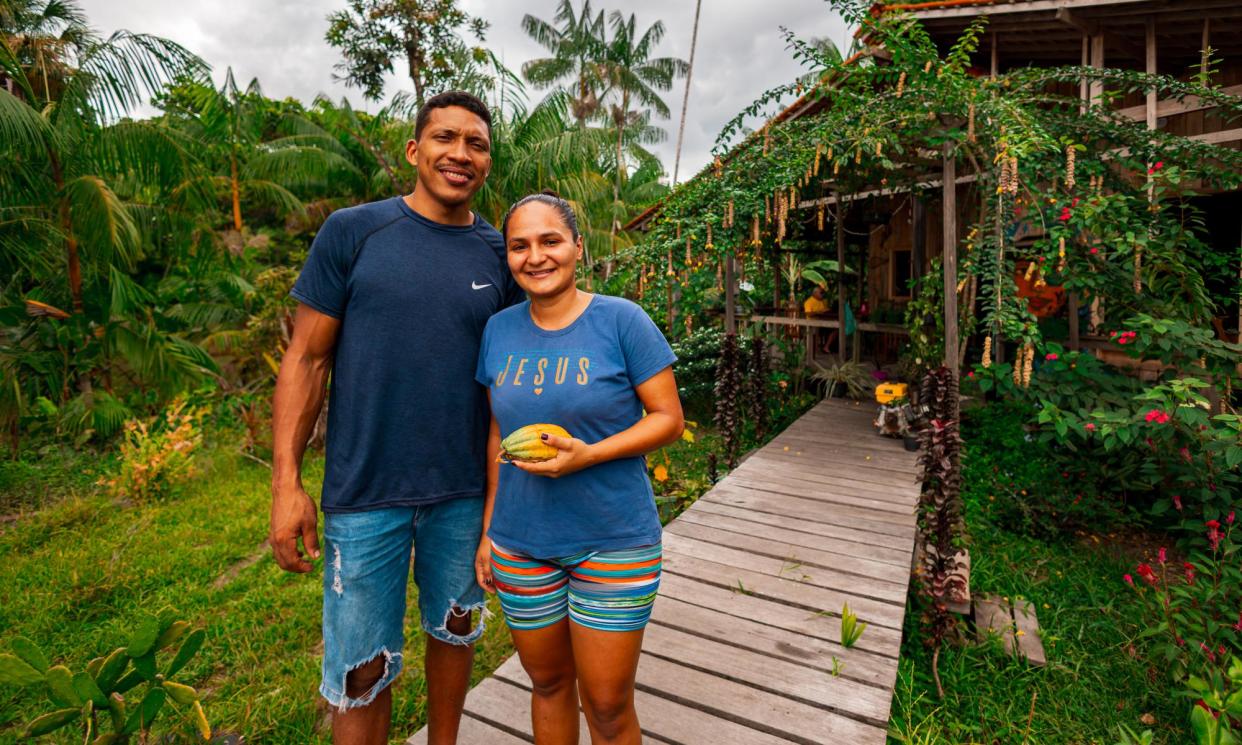‘We make magic here’: the Amazon community creating a future out of chocolate

On the banks of the River Acará in the Brazilian Amazon, about 50km (31 miles) south of the city of Belém, the rich smell of melted chocolate wafts out from a boatyard turned small factory. “We make magic here,” says Diana Gemaque, 33, a member of the Cacao Guardians chocolate cooperative in the riverside community of Acará-Açu.
In 2021, Gemaque and several other women from her community were invited to take part in a chocolate-making workshop organised by the Amazonian chocolatier César De Mendes. Inspired by the experience, eight of them got together to form the Cacao Guardians. What began as an experiment in someone’s kitchen is now a registered business with an artisanal factory that produces 130kg of chocolate a month.
The women work with fermented cacao beans supplied by the business next door, run by Gemaque’s cousin Zeno, who buys the harvested fruit from communities up and down the river. Most of their production is bars of 100% cocoa made to order for a client in São Paulo; the rest is sold in shops in Belém and at chocolate fairs around Brazil as 20g bars, packaged in dried cacao leaves and named Acaráçu – a brand that now encompasses various local projects.
“We realised [our chocolate] was more than just cacao, it’s our territory, our community, our potential,” says Luciene Gemaque, 34, another cousin.
The Cacao Guardians’ work has led to a rethink of the community’s way of life and inspired the creation of other grassroots initiatives that seek to preserve the forest. These include a football club that takes saplings to its games to encourage its opponents to plant, and a group introducing an agroforestry system – the integration of native trees and shrubs with crops – on their smallholdings, which they are reforesting without pesticides.
“I have banana, pineapple, yam, aría tubers, cashew, wild sweetsop, orange, cacao, soursop, wild apricot, guava, acerola, papaya, and I have açaí,” says Izabela Campos, as she walks through the wild garden surrounding her wooden house.
The daughter of a Cacao Guardian, Campos is the driving force behind the agroforestry project, which involves nine families who each own four to five hectares of land. “I planted everything, except the açaí.”
Like countless other riverside communities in the state of Pará, most of the 150 families in Acará-Açu grow açaí berries for a living. About 95% of Brazil’s açaí production comes from Pará. Touted for its health benefits, the purple berry has grown in popularity outside its native Amazon and, increasingly, beyond Brazil’s borders, where it is marketed as a superfood. This has led to an explosion in production, from about 120,000 tonnes in 2000 to nearly 1.7m tonnes last year.
The açaí boom has produced economic benefits for poor rural communities, but the resultant “açaífication” of parts of the Amazon – a term coined by scientists – has also brought problems to the rainforest, notably a loss of biodiversity. Monocultures of açaí also end up reducing production of the fruit itself due to the loss of pollinators.
“Our aim is to end the monoculture of açaí and achieve food sovereignty, to eat what we plant,” says Campos. The 26-year-old observes other adverse effects from an over-reliance on açaí, notably financial insecurity between the biannual harvests and a loss of wellbeing and traditional lifestyles.
“Nowadays, a labourer is accustomed to selling what he plants and buying food at the supermarket. So, what’s on our table? Processed foods. We want to turn that around.”
The agroforesters are growing saplings from seeds with the aim of reforesting all their land within three years so that they can harvest subsistence crops year-round alongside seasonal cash crops – which will include cacao as well as açaí.
Wanor Elvis, 33, says he already feels the benefits of this new system. “This area is cooler,” he says, walking through a reforested section of his açaí plantation, where the presence of other species provides tree and ground cover. “We’d like everyone who lives here to adopt this [agroforestry] process.”
The Cacao Guardians hope to expand, strengthening other communities while increasing production. Currently, the business makes just 7,000 reais (£1,164) a month on average, while the women are paid hourly and take home 300 to 500 reais monthly. This money is already making a difference to the women, who say they have also found companionship, empowerment and a purpose in their work.
“If it weren’t for the Guardians, we’d be at home, resigned to our fate. Some women tell us they have to ask their husband for money even to buy menstrual products; we don’t go through that any more,” says Diana Gemaque, who as a housewife used to think she would have to move to the city to “become something”.
“Now I will only leave if it’s to go and build another [Cacao Guardians] space, with women in another community, to empower them,” she says.


